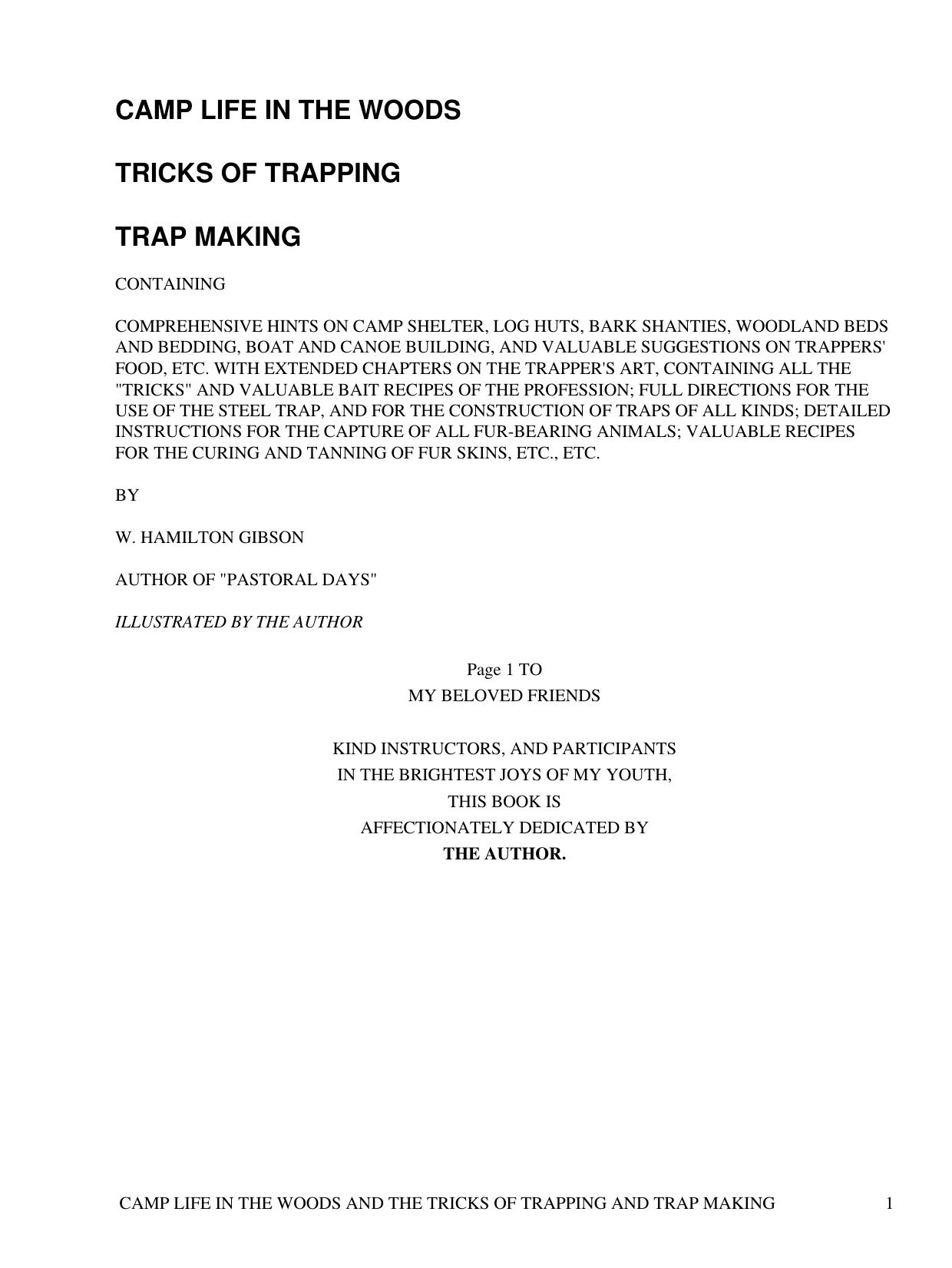Camp Life in the Woods and the Tricks of Trapping and Trap Making by W. Hamilton Gibson

Author:W. Hamilton Gibson [Gibson, W. Hamilton]
Language: eng
Format: epub, pdf
Published: 0101-01-01T00:00:00+00:00
THE CANADIAN LYNX.
The lynx represents another of the Cat tribe, and as its name implies is a native of the regions north of the United States, although sometimes found in upper Maine and on the lower borders of the great lakes. It is commonly known throughout Canada as the Peshoo, or "Le Chat."
Our illustration is a truthful representation of the animal. Its total length exceeds three feet, and its tail is a mere stub. The fur is thick, and the hairs are long, the general color being grey, sprinkled with black. The legs are generally darker than the body, and the ears are often edged with white. The limbs and muscles are very powerful, the paws are very large for the size of the animal, and are furnished with strong white claws, which are imbedded in the fur of the feet when not in use, they are shown in our illustration. The ears of the lynx form a distinct feature, by which the animal could be easily identified; they are long and tipped with stiff projecting hairs, giving the creature a very odd appearance.
The peshoo can not be said to be a very dangerous animal, unless it is attacked, when it becomes a most ferocious antagonist. The writer knew of a gentleman who was pounced upon and very nearly killed by one of these infuriated creatures, and there are many like instances on record.
The principal food of the lynx consists of the smaller quadrupeds, the American hare being its favorite article of diet. It is a good swimmer, and a most agile climber, chasing its prey among the branches with great stealth and dexterity. Like the wolf, fox, and many other flesh eating-animals, the lynx does not content itself with the creatures which fall by the stroke of its own talons, or the grip of its own teeth, but will follow the trail of the puma, in its nocturnal quest after prey, and thankfully partake of the feast which remains after its predecessor has satisfied its appetite.
While running at full speed, the lynx presents a most ludicrous appearance, owing to its peculiar manner of leaping. It progresses in successive bounds, with its back slightly arched, and all the feet striking the ground nearly at the same instant. Powerful as the animal is, it is easily killed by a blow on the Page 165 back, a slight stick being a sufficient weapon wherewith to destroy the creature. For this reason the "Dead-fall" is particularly adapted for its capture, and is very successful, as the animal possesses very little cunning, and will enter an enclosure of any kind without the slightest compunction, when a tempting bait is in view. The dead-fall should of course be constructed on a large scale, and it is a good plan to have the enclosure deep, and the bait as far back as will necessitate the animal being well under the suspended log in order to reach it. The bait may consist of a dead quadruped or of fresh meat of any kind.
Download
Camp Life in the Woods and the Tricks of Trapping and Trap Making by W. Hamilton Gibson.pdf
This site does not store any files on its server. We only index and link to content provided by other sites. Please contact the content providers to delete copyright contents if any and email us, we'll remove relevant links or contents immediately.
Backpacker the Complete Guide to Backpacking by Backpacker Magazine(2194)
Capital in the Twenty-First Century by Thomas Piketty(1950)
The Isle of Mull by Terry Marsh(1899)
Predation ID Manual by Kurt Alt(1658)
The Collected Non-Fiction by George Orwell(1575)
Small-Bore Rifles by C. Rodney James(1506)
All Fishermen Are Liars by John Gierach(1448)
Backcountry Bear Basics by Dave Smith(1436)
Creative Confidence by Tom Kelley(1417)
The Art of Throwing by Amante P. Marinas Sr(1358)
50 Famous Firearms You've Got to Own by Rick Hacker(1343)
Blood Mountain by J.T. Warren(1308)
Archery: The Art of Repetition by Simon Needham(1305)
Long Distance Walking in Britain by Damian Hall(1283)
The Scouting Guide to Survival by The Boy Scouts of America(1252)
Backpacker Long Trails by Backpacker Magazine(1251)
The Fair Chase by Philip Dray(1229)
The Real Wolf by Ted B. Lyon & Will N. Graves(1214)
The Ultimate Guide to Home Butchering by Monte Burch(1207)
